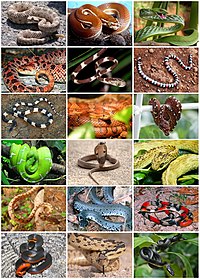
Photo from wikipedia
AIM To evaluate the effect of various rotational motions on the torque/force generation, surface wear, and shaping ability of the ProGlider glide path instrument (Dentsply Sirona). METHODOLOGY Mesiobuccal and mesiolingual… Click to show full abstract
AIM To evaluate the effect of various rotational motions on the torque/force generation, surface wear, and shaping ability of the ProGlider glide path instrument (Dentsply Sirona). METHODOLOGY Mesiobuccal and mesiolingual canals of mandibular molars were selected based on the canal volume, length, angle of curvature (25°-40°), and radius of curvature (4-8 mm) after micro-computed tomographic scanning. The samples were randomly assigned to four groups (n = 13, each) according to movement kinematics [continuous rotation (CR; 300 rpm), optimum torque reverse motion (OTR; 180° forward and 90° reverse when torque > 0.4 N·cm), time-dependent reciprocal motion (TmR; 180° forward and 90° reverse), and optimum glide path motion (OGP; a combination of 90° forward, 90° reverse, 90° forward, and 120° reverse)]. Instrumentation was performed with an automated root canal instrument and torque/force analysing device. Maximum torque/force values, canal volume changes, and canal-centring ratios at 1, 3, 5, and 7 mm were evaluated. Surface defects (pits, grooves, microcracks, blunt cutting edges, and disruption of cutting edges) and spiral distortion on the ProGlider instrument were scored at the tip and 5 mm short of the tip before and after five consecutive uses with scanning electron microscopy. The Kruskal-Wallis test followed by Dunn's post-test with Bonferroni correction and Wilcoxon signed-rank test were used to analyse the data (α = 0.05). RESULTS OGP generated significantly less clockwise torque and greater upward force than other groups (P < 0.05). OGP resulted in significantly fewer surface defects than CR (P < 0.05). In OGP and CR, the tip exhibited more surface defects than 5 mm short of the tip (P < 0.05). CR resulted in greater volume changes than OGP and TmR (P < 0.05) and greater centring ratios (i.e., more deviation) than OGP at 1 mm and OTR at 3 mm (P < 0.05). CONCLUSIONS Under laboratory conditions using the ProGlider instrument, OGP generated significantly less clockwise torque and greater upward force than the other rotatory motions. OGP generated fewer superficial defects than CR, and the three modes of reciprocal rotation better maintained the apical curvature of root canals than CR with the ProGlider instrument.
Journal Title: International endodontic journal
Year Published: 2022
Link to full text (if available)
Share on Social Media: Sign Up to like & get
recommendations!